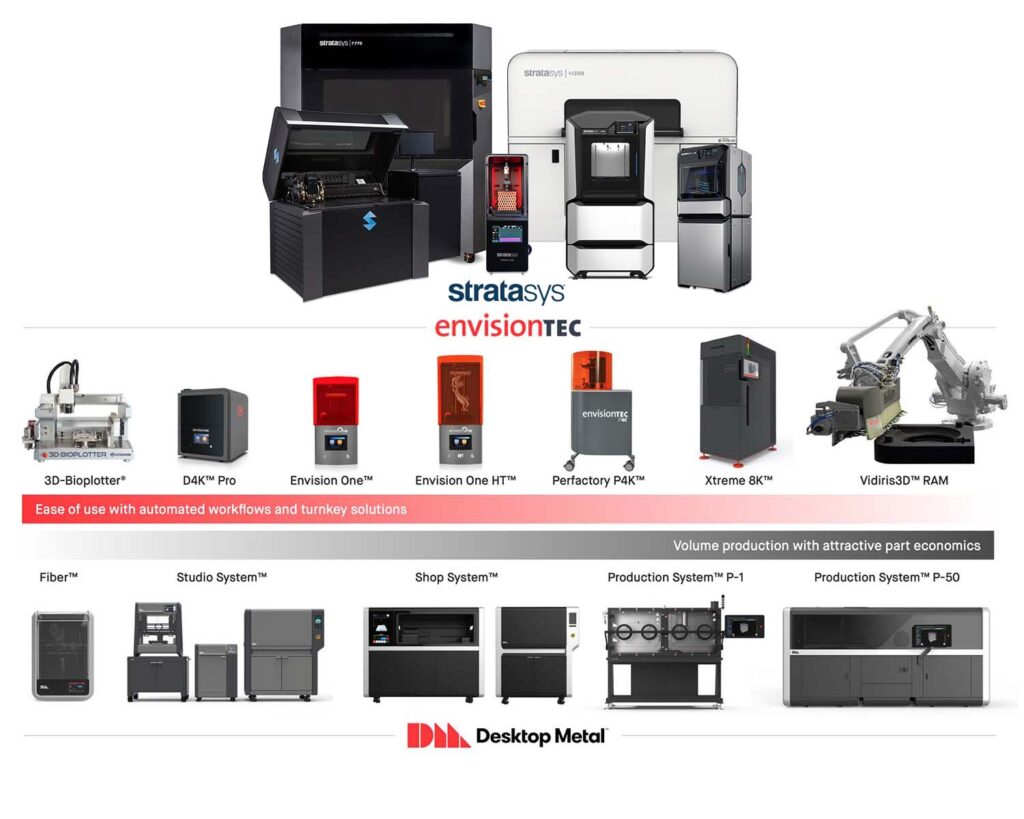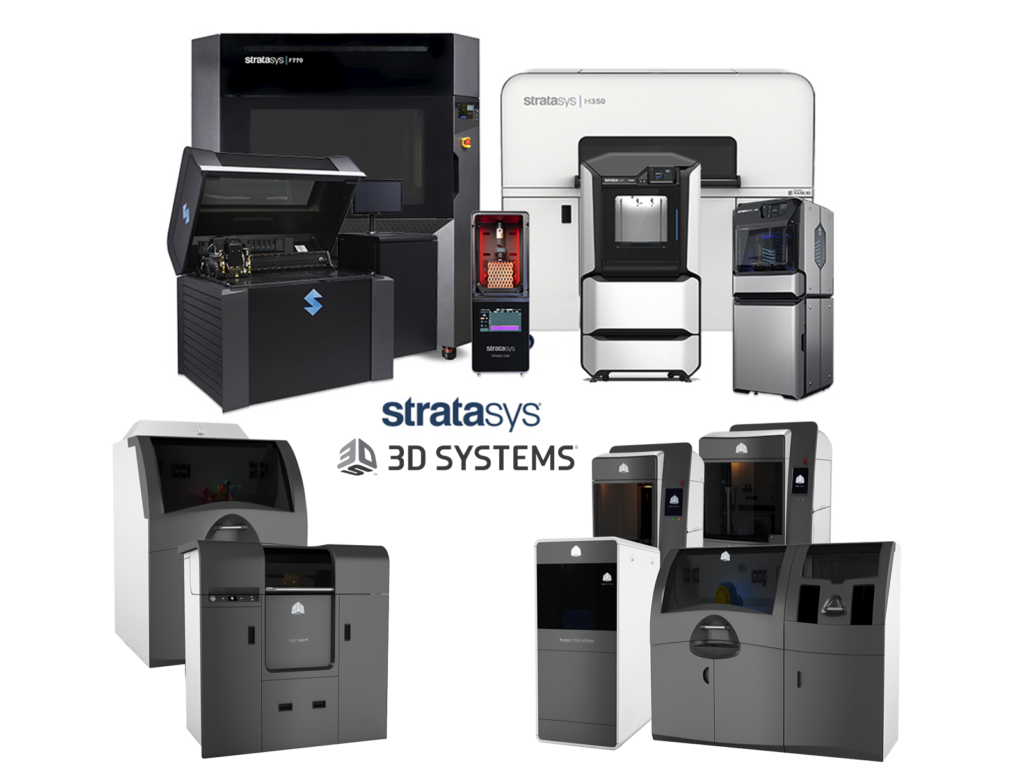Though long-time 3D printing competitors Stratasys (Nasdaq: SSYS) and 3D Systems (NYSE: DDD) are still in negotiations, the former company has expressed its continued intent to merge with the smaller additive manufacturing newcomer Desktop Metal (NYSE: DM). Stratasys announced that shareholders will vote for or against the deal at an Extraordinary General Meeting (EGM) of Shareholders on September 28, 2023, with both the Stratasys and Desktop Board of Directors urging investors to vote for the merger. Proxy voters have until Thursday, August 24 to register their decisions.
A Desktop Merger
Desktop Metal’s Class A common stock will be exchanged for ordinary shares of Stratasys at a fixed ratio, resulting in Desktop Metal stockholders holding approximately 41% of the combined company, while Stratasys shareholders will hold about 59%. The deal’s implied value depends on market price of Stratasys ordinary shares, which was about $1.83 per share of Desktop Metal stock as of the last trading day before the announcement.
Both Stratasys and Desktop Metal will hold meetings for shareholders to vote on various proposals, including the Merger itself, changes to Stratasys’ articles of association, increasing the authorized share capital, electing new directors, and other related matters. Approval of the merger agreement by both parties is required for the merger to be completed.
The proxy vote that occurs a month before the EGM has the potential to influence any negotiations with 3D Systems. If the proxy voters are overwhelmingly in favor of a Desktop merger, then Stratasys could potentially use that to increase leverage in its discussions. At the same time, such a vote might suggest to the Board that the shareholders prefer a Desktop merger over a combination with 3D Systems.
DOJ Antitrust Investigation
For the deal to go through, not only will shareholders have to vote in favor of it, but the two firms will have to make it through a probe being conducted by the U.S. Department of Justice (DOJ) to see if the merger represents a possible violation of antitrust laws, specifically the Hart–Scott–Rodino Antitrust Improvements Act of 1976. Both companies received a “second request” from the DOJ’s Antitrust Division, indicating that the DOJ needs to perform a more detailed analysis of the merger, potentially delaying the deal.
The HSR Act oversees the merging or buying of large businesses. When two companies above specific financial thresholds want to merge or one wants to acquire the other, they must notify the Federal Trade Commission (FTC) and the DOJ before proceeding. Once the companies notify the government, there’s a usual waiting period of 30 days, allowing the authorities to check if the deal might reduce competition. If there are concerns, the government can request more information (a “second request”), extending the waiting period, and even sue to block the deal if they determine it could harm competition.
A preliminary investigation is par for the course in 3D printing, but a second request is less common. It is the DOJ’s duty to investigate all mergers of a particular size and it has done so in the past in AM. For instance, in the case of Stratasys’s merger with Objet in 2012, the DOJ terminated its investigation early after it was argued that the two companies’ products “were more likely to be complements than substitutes, and therefore the merger should not raise competitive concerns.”
The DOJ may have some issues with the current case due to the fact that there is some overlap between Stratasys and Desktop Metal’s vat photopolymerization lines. Otherwise, there wouldn’t seem to be much of problem in that regard. Given the fact that Desktop Metal is notably smaller than 3D Systems, with whom Stratasys is also in talks about a possible merger, one can only imagine the red tape that would be associated with a combination in that case. After all, both firms offer polymer powder bed fusion (PBF), vat photopolymerization, fused deposition modeling, and inkjet products. Moreover, they are the two largest pure-play companies in the industry.
In 2001, the DOJ determined that the proposed merger of 3D Systems with PBF pioneer DTM “would have substantially lessened competition in the U.S. industrial rapid prototyping systems market by reducing the number of competitors in the U.S. market from three to two and limiting the dynamic competition that has resulted in lower prices to customers and technological improvements to rapid prototyping systems.” It went so far as to sue to block the transaction before allowing the deal to go through “provided that the merged 3D/DTM agreed to license their rapid prototyping patents to a company that currently manufactures rapid prototyping equipment outside of the U.S. and that will now compete in the U.S. market, thus adding a new entrant.”
In a way, the current investigation into Stratasys and Desktop serves as a test for what could happen with a larger combination between Stratasys and 3D Systems. Depending on the outcome, the parties will know what sort of environment they face when it comes to a more substantial merger.
All of this complicates an already complex deal, which saw Israeli electronics 3D printer manufacturer Nano Dimension (Nasdaq: NNDM) fight to buy Stratasys. Since then, Nano Dimension has backed off and is instead pursuing a new strategy, including smaller purchases. How the industry shakes out depends on what happens with Stratasys, Desktop, and 3D Systems. We can certainly expect further mergers and acquisitions, about which are theorized in a separate article.
Subscribe to Our Email Newsletter
Stay up-to-date on all the latest news from the 3D printing industry and receive information and offers from third party vendors.
You May Also Like
New Report: Semiconductor Industry to See $1.4B in 3D Printing Revenues by 2032
“The semiconductor sector has become the most strategically significant area of global industry.” Truer words are hard to come by when it comes to the modern world, and they are...
Will Photonic-Crystal Lasers Revolutionize 3D Printing?
Powder bed fusion (PBF) for metals and polymers predominantly utilizes lasers as the primary heat source. Some directed energy deposition (DED) technologies also employ lasers, while various vat polymerization methods...
3D Printing Unpeeled: Orbex Investment, IndoMIM and HP, Ultrasonic Waves
INDO-MIM has bought three HP Metal Jet S100 printers, operating two in India and one in Texas. This is a win for HP because the company has deep experience in...
3D Printing Webinar and Event Roundup: April 21, 2024
It’s another busy week of webinars and events, starting with Hannover Messe in Germany and continuing with Metalcasting Congress, Chinaplas, TechBlick’s Innovation Festival, and more. Stratasys continues its advanced training...

































